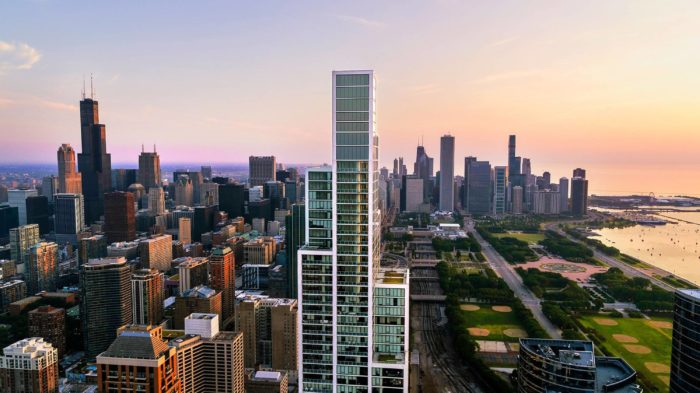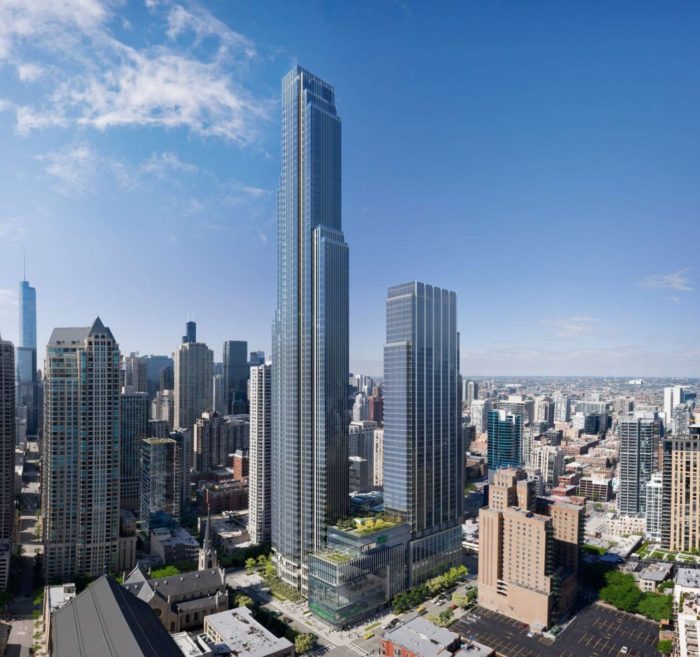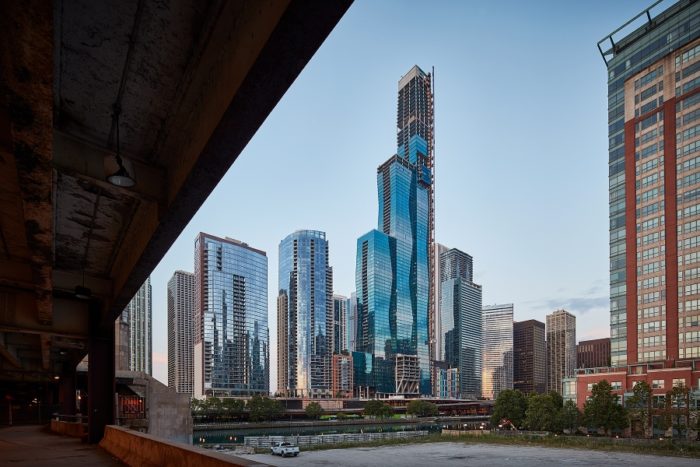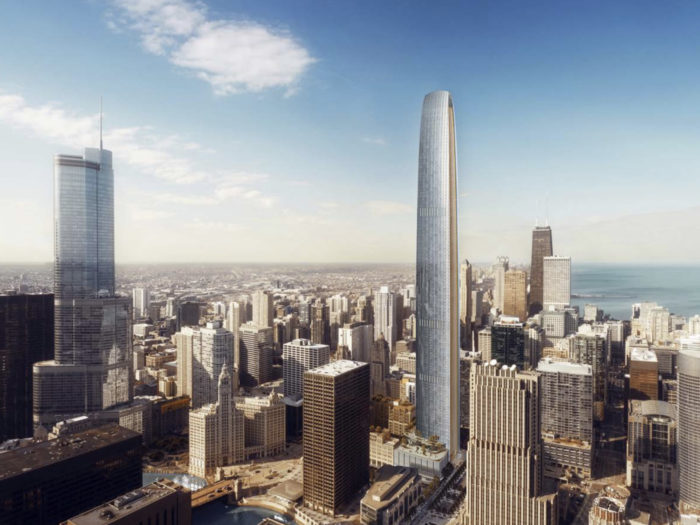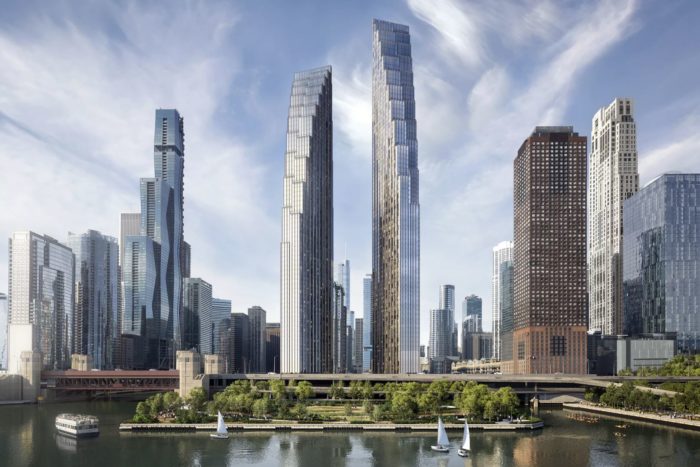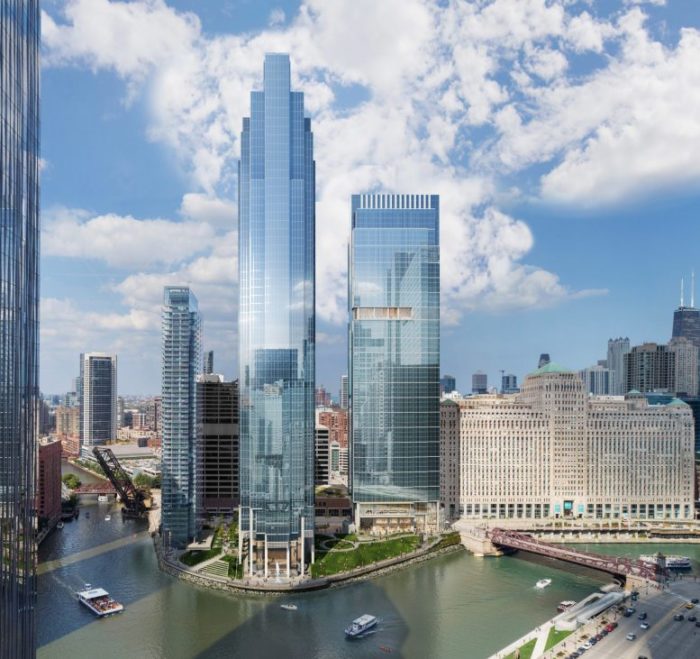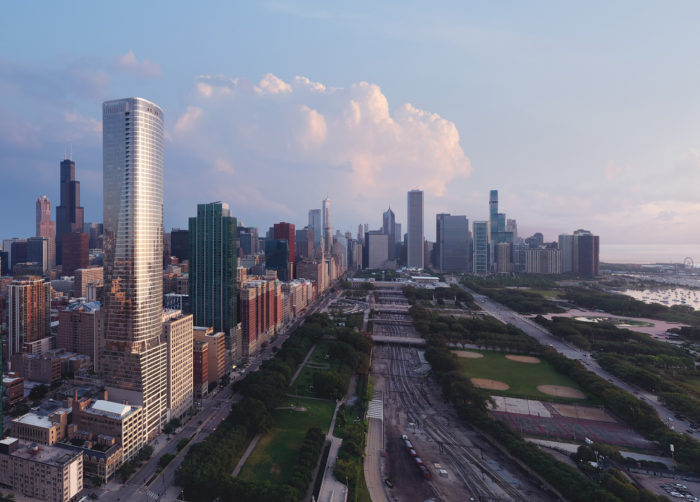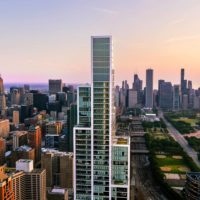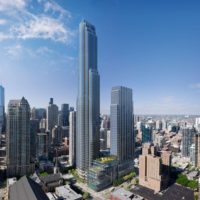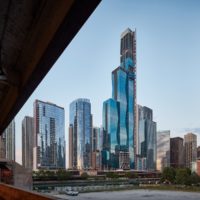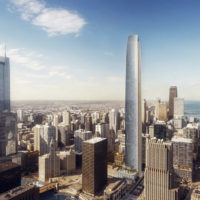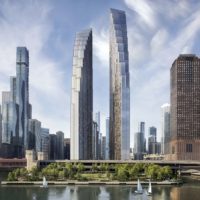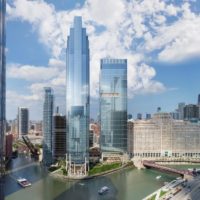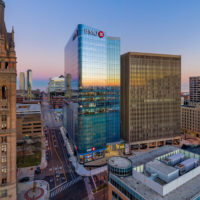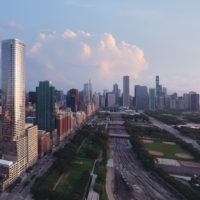The city of Chicago has been a laboratory for architectural innovation and experimentation for a long time now. Known as the skyscraper’s birthplace and home to one of the world’s most spectacular and significant skylines, the Chicago skyline is set to revive itself with a new set of tall and iconic buildings that will rank amongst Chicago’s tallest buildings.
With a new wave of a construction boom, a proliferation of skyscrapers is underway that will redefine the Chicago skyline and raise the bar high for future development, both literally and architecturally.
Chicago’s Tallest Buildings “8 Towers That Will Change the Chicago Skyline”
Below are eight magnificent towers that will reshape Chicago downtown and rank among the city’s tallest buildings in the coming years:
-
NEMA
The 896-foot-tall Tower is under construction at the southern edge of the Chicago skyline. Formerly called One Grant Park, the 76-story Tower is a luxury rental building with 800 units developed by Crescent Heights and designed by Rafael Viñoly. Plans also call for 622 parking spaces and approximately 12,000 square feet of retail space.
The construction of NEMA started in 2017 and launched in 2019. It’s now considered the South Loop’s tallest building until the construction of phase two’s twin towers which may exceed the 984 feet threshold. The structure’s boxy and modular aesthetic acknowledges the ‘bundled-tube’ structural layout of the nearby Willis Tower (formerly Sears Tower).
-
One Chicago Square
The product of a collaboration between Goettsch Partners and Hartshorne Plunkard Architecture, One Chicago Square is a mixed-use proposal that will be built on the site of Holy Name Cathedral’s parking lot at 740 N. State Street. The project involves towers rising 49 and 76 stories above a shared podium, with the taller one topping at 1,011 feet.
One Chicago Square will be the sixth tallest building in 2022. It will feature 869 rental units and condos, commercial offices, a Whole Foods store, a 100,000-square-foot Life Time Athletic club, a restaurant, and 1090 parking stalls.
-
Vista Tower
Vista Tower is under construction along Chicago River’s main branch at 363 and 401 E. Wacker Drive. It is expected to open in 2020. The 1,198-foot-tall building, designed by the Chicago-based firms—Studio Gang and bKL Architecture, is currently the city’s third tallest building.
Comprising a combination of 406 luxury condos and a 192-room five-star hotel, the skyscraper, with its three towers, is wrapped in eight distinct shades of glass that function as its exterior curtain wall. The color of the glass incrementally shifts from the bottom upwards, starting from light to dark and back. The grading shades of color accentuate the undulating form of the building.
-
Tribune Tower East
This proposed addition to the existing Neo-Gothic Tribune Tower, which is being adapted into a residential tower with luxury condominiums, will rise to 1,422 feet, making it the second tallest building in Chicago. Designed by Adrian Smith and Gordon Gill Architecture, the building will replace a parking lot just east of its historic neighbor, including a 200-key luxury hotel, 439 rental apartments, 125 condominiums, and 430 parking spaces.
The Tower’s north and south glass façades gently curve inwards at its architectural crown—a feature described by architecture critic Blair Kamin as ‘Batman-like.’ On the other hand, the east and west façades feature vertical fins clad in bronze-colored metal to complement the adjacent Tribune Tower’s Indiana limestone façade.
The alignment of the new Tower at the north end of the parking lot respects the long-standing view corridor that maintains the visibility of the Tribune Tower from Lake Shore Drive.
-
400 N. Lake Shore Drive
The 400 N. Lake Shore Drive development aims to create a dramatic and welcoming gateway at the mouth of the Chicago River. Developed by Related Midwest and designed by Skidmore, Owings, and Merrill (SOM), the building stands as a pair of gleaming glass and terracotta towers with an incredible view of the Chicago River.
The duo will rise 1,100 and 850 feet atop a shared podium, housing a combination of 550 rental apartments, 300 condo units, and 175 hotel rooms. Separated by 150 feet, the towers gently twist as they rise while giving homage to Chicago’s early skyscrapers by incorporating terracotta cladding and bay windows. According to the developers, the plan is to break ground on both towers in the summer of 2019 and deliver the project in 2023.
-
Wolf Point South
Designed by Pelli Clarke Pelli, the South Tower is the third and last one of the three buildings of the Wolf Point megaproject at the junction of Chicago River’s north, south, and main branches. Developers Hines Interests and Joseph P. Kennedy Enterprises completed the 485-foot-high west tower in 2016 and are scheduled to deliver the 660-foot-high Wolf Point East building in 2019.
Unlike the west and east buildings, which are residential towers, Wolf Point South is expected to include a combination of office spaces, hotel rooms, and dwelling units. Before work can begin on the Tower, the final zoning needs to be approved; however, it is expected to open in 2023.
-
BMO Tower
BMO Financial Group has proposed an office tower next to Chicago’s Union Station that will break ground as early as next year and open in 2022. Designed by Goettsch Partners and developed by Riverside, the Tower will replace an Amtrak-owned parking garage just south of Union Station’s transit center.
The 700-foot-tall building will comprise 50 floors and include a 1.5-acre publicly accessible park above a 400-stall garage at its base. It will be the city’s tallest building west of Canal Street when it opens in 2022.
-
1000 M
The 74-story, Helmut Jahn-designed skyscraper will replace a surface parking lot at S. Michigan Avenue across Chicago’s Grant Park. Comprising 323 luxury condominiums, the new Tower will significantly impact Chicago’s southern skyline. It will also provide sweeping views of the Loop skyline and Lake Michigan.
Development partners, Time Equities, JK Equities, and Oak Capitals are expected to break ground in 2019—provided pre-construction sales are strong enough to complete the project by 2022. The building’s 40,000 square feet of amenity space will include a landscaped pool deck, a fitness center, a library, a spa, a formal dining room, and a Himalayan salt therapy room.
With a renewed interest in urban living in the 21st century, Chicago Downtown living is spurring development to new heights. Moreover, increasing job opportunities and a desire to be near urban amenities and transit infrastructure is bringing people back to Downtown Chicago.
Since 2000, 38 new skyscrapers have been introduced to the Chicago skyline, 25 of which are residential towers. A new set of skyscrapers is under construction, which are expected to open by 2023. The new high-rise buildings continue a long-standing trend in Chicago that has been at the forefront of ‘living in the skies for decades.
What are the Potential Drawbacks of Chicago’s Construction Projects?
The ongoing construction projects in the city have been a topic of debate among residents and experts alike. While some argue that development is necessary for economic growth and modernization, others are concerned about the potential negative impacts on the environment and local communities.
- One major criticism is the displacement of long-time residents and small businesses due to rising property values and rent. This can lead to gentrification and a loss of cultural diversity in the area.
- Additionally, construction projects can cause disruptions and safety hazards for those living or working nearby.
- There are also concerns about the environmental impact of these projects, particularly in terms of increased traffic and pollution. In addition, the construction process can contribute to noise pollution and dust, which can adversely affect nearby residents and workers.
- While promoting economic development and infrastructure improvement is important, it is equally important to consider the potential drawbacks and address them through careful planning and community involvement. This requires a balance between progress and preserving local communities and the environment.
- ©NEMA Chicago
- Rendering by HPA and Goettsch Partners
- ©Tom Harris/ Studio Gang
- ©CIM/Gloub
- ©Rendering by SOM
- ©Pelli Clarke & Partners
- ©Goettsch Partners
- ©Rendering by Jahn


